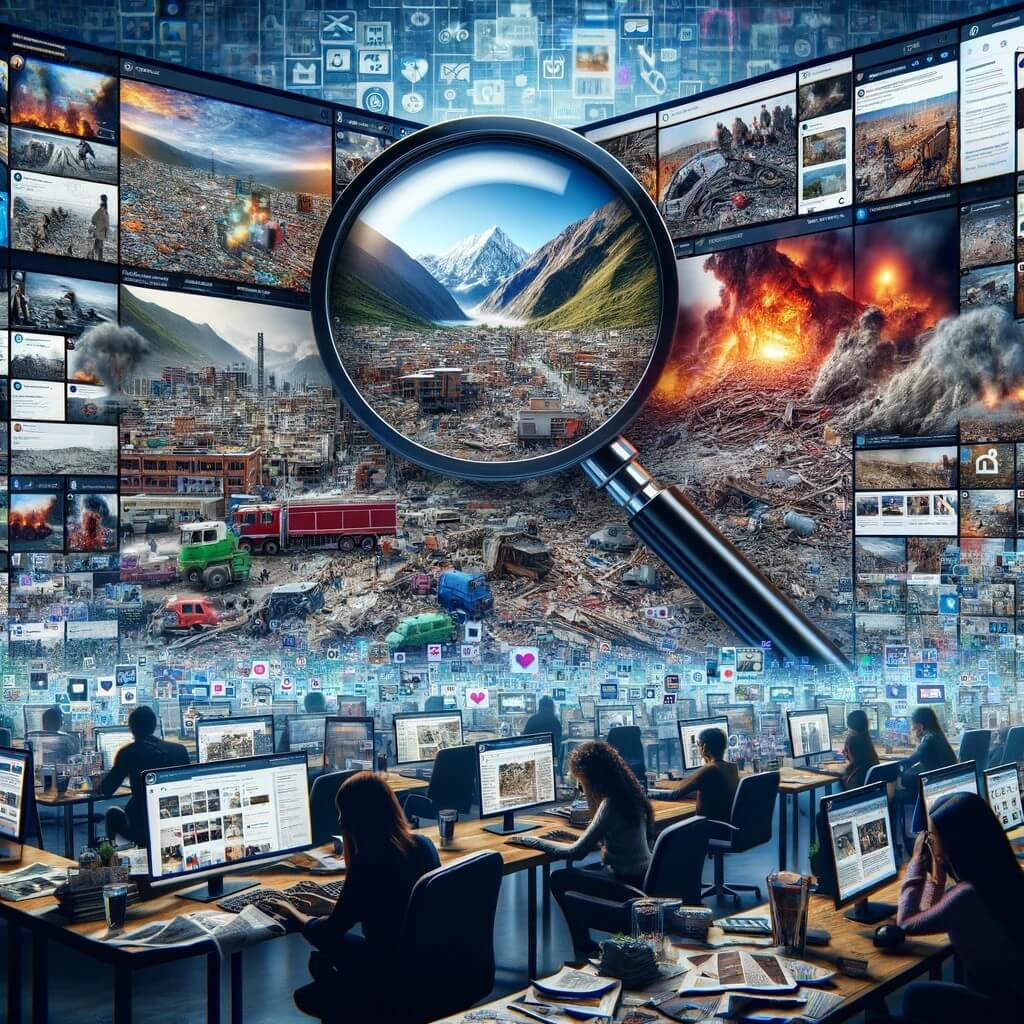In the wake of the devastating earthquake in Jajarkot district, Karnali Province, a disturbing trend has emerged on social media— the proliferation of AI-generated images claiming to depict the aftermath of the disaster. The images, initially shared by Meme Nepal, gained traction among celebrities, politicians, and humanitarian organizations, drawing attention to Nepal’s impoverished region. Yet, the authenticity of these images came under scrutiny as fact-checkers delved into their origins.
AI-generated images unmasked – A digital illusion exposed
The initial surge of AI-generated images emerged as a visual narrative depicting the aftermath of the Jajarkot earthquake. Shared by Meme Nepal, these images quickly became a viral sensation, endorsed by celebrities, politicians, and humanitarian organizations. Figures like Anil Keshary Shah and Rabindra Mishra inadvertently became conduits for propagating these misleading visuals, unaware of the digital mirage they were endorsing. The revelation that Meme Nepal discovered the image on social media raises fundamental questions about the credibility and source of such content.
As the capabilities of AI-generated images progress from intriguingly peculiar to deceptively realistic, the task of fact-checking faces unprecedented challenges. Conventional tools like Reverse Image Search, once reliable in exposing the authenticity of visuals, now falter in the face of AI sophistication. Enterprising fact-checkers are compelled to explore alternative platforms like Illuminarty.ai and isitai.com, but these tools, while providing probabilities, do not offer the definitive certainty required in the fight against misinformation.
Experts emphasize the necessity of refining observational skills to discern the subtle nuances that betray AI manipulation. Kalim Ahmed, drawing on his experience as a former fact-checker, sheds light on deformities in people and unrealistic elements within the debris. Dan Evan, a speaker at the News Literacy Project webinar, advocates for a vigilant eye, noting the peculiar smoothness and off-putting details that can be indicative of AI intervention.
Decoding the digital domain – Embracing skepticism and transparency
In the absence of foolproof AI detection tools, skepticism emerges as a potent ally in the battle against misinformation. Experts counsel users to question the authenticity of online content, relying on visual clues that may expose AI manipulation. Tamoa Calzadilla’s comprehensive guide underscores the importance of paying attention to hashtags signaling AI use and scrutinizing human-like features for anomalies.
Despite AI’s strides in generating realistic images, it encounters challenges in accurately replicating certain intricate human features. Experts advocate for a meticulous examination of images, urging users to question the number of fingers, clarity of contours, normalcy in holding objects, and subtle nuances. Transparency emerges as a crucial element, with news media and social media users advised to disclose information about AI-generated images to mitigate the inadvertent spread of misinformation.
In a landscape saturated with AI-generated illusions, users are implored to approach online content with a discerning eye. The evolving nature of AI technology demands constant vigilance and adaptability in fact-checking methodologies. The fundamental question lingers: In this digital era, how can users navigate the intricate web of AI-generated mirages, distinguishing reality from meticulously crafted illusions? The quest for truth in the digital realm continues, requiring a collective effort to unveil and dismantle the digital mirage.




